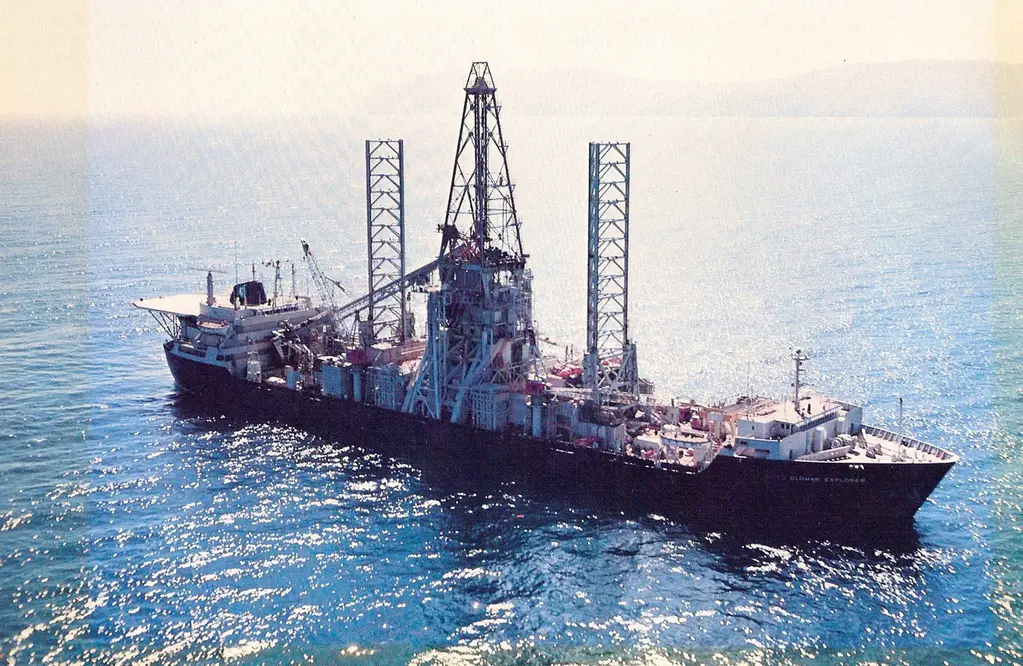You’ve probably heard someone use the phrase, “We can neither confirm nor deny.” This non-specific saying, known as the “Glomar response,” has a fascinating history behind it, and it originated to answer questions about a dicey CIA operation.
In the late 1960s, the United States and the Soviets were engaged in a dangerous political game, and they were using their nuclear submarines to play. In 1968, the Soviets lost K-129, one of their nuclear submarines, northwest of Hawaii in the Pacific. It sank to the bottom of the ocean under unknown circumstances.
The US knew the Soviet sub had sunk with nuclear missiles on board and knew that it would hold a treasure-trove of intelligence information if they could get to it. The CIA eventually located the vessel 3-miles beneath the sea and began to come up with plans to get to the submarine.
Because of the depth where the submarine sat, it was decided that the best course of action would be to retrieve it by lifting it from the ocean floor. The CIA ran through several different scenarios before they ultimately settled on using a claw-like device to lift the submarine from the seafloor and raise it into a ship’s hull. The problem was the operation had to be done entirely in secret.
The CIA contacted an unlikely source for help in building a ship that could even lift the submarine — billionaire Howard Hughes. They needed a cover story to hide the fact behind why a vessel was in the area where the Soviet submarine had gone down. The CIA explained that the vessel was there mining for manganese.
The Hughes Glomar Explorer was then built in 1970 by a company called Global Marine, and the name of the covert operation was called “Project Azorian.” The ship arrived over the site on July 4, 1974. Now that the CIA had their ship and a good cover story, they next had to lift a submarine that weighed 14 million pounds.
The CIA discovered that the submarine’s hull had been badly damaged, but they were able to begin the lift. At some point during the submarine’s ascent to the surface to be lifted into the hull of the ship, it was discovered that a portion had broken apart and fell back to the seafloor. It was the portion the CIA wanted most, the part that contained the nuclear missiles.
The CIA did salvage a portion of the submarine from the lift, and six Russian crew members were also recovered. The crew was later given a formal military burial at sea (a film of the burial was given to Russian President Boris Yeltsin in 1992). It is not entirely known what else was recovered from K-129.
But a strange event took place before the operation started that would ultimately expose the project. A month before the Glomar Explorer was set to sail in 1974, a theft took place in Los Angeles at the offices of the Summa Corporation (a Hughes business holding company). Secret documents that pertained to the project were stolen, some of which connected Hughes to the CIA.
The CIA looked to the FBI for help in investigating the break-in, and the FBI, in turn, got the help of the Los Angeles Police Department. By late 1974 and early 1975, questions by reporters were beginning to rise over what was going on.
At the time, the CIA didn’t know how to react to the questions. They didn’t want the Soviets to know what they knew or what they may have recovered. It would seem the CIA could have just said nothing, but being a US government agency, they were bound to the Freedom of Information Act. If someone asked for a document from the government, the government had to respond unless they had a national security reason not to do so.
Things came to a head when the Los Angeles Times was set to publish a story about the operation. The CIA tried to stop it but was unsuccessful, and a request for disclosure about the project was made by the LA Times. The CIA had to find a way to respond.
The task of coming up with an appropriate response fell to an attorney at the CIA named Walt Logan, the Associate General Counsel. Logan was bound by law to tell the truth, but he also had to adhere to the CIA’s policies and not reveal any secrets or intelligence sources that could be detrimental to national security.
He came up with a response to the request that was neither untruthful nor did it compromise national secrets. It became known as the “Glomar response.” In it, Logan said about the existence of the secret operation and the request for disclosure, “We can neither confirm nor deny the existence of the information requested but, hypothetically, if such data were to exist, the subject matter would be classified, and could not be disclosed.”
The response by the CIA stood after being challenged, and the Freedom of Information request was declined. A precedent was then set for any government organization to use the “Glomar response” as they saw fit when there was a Freedom of Information request. The courts have so far supported the response by governmental agencies, but only if they provide enough information to justify using it.
Sources: CIA, NY Times, RadioLab, George Washington University-National Security Archive



